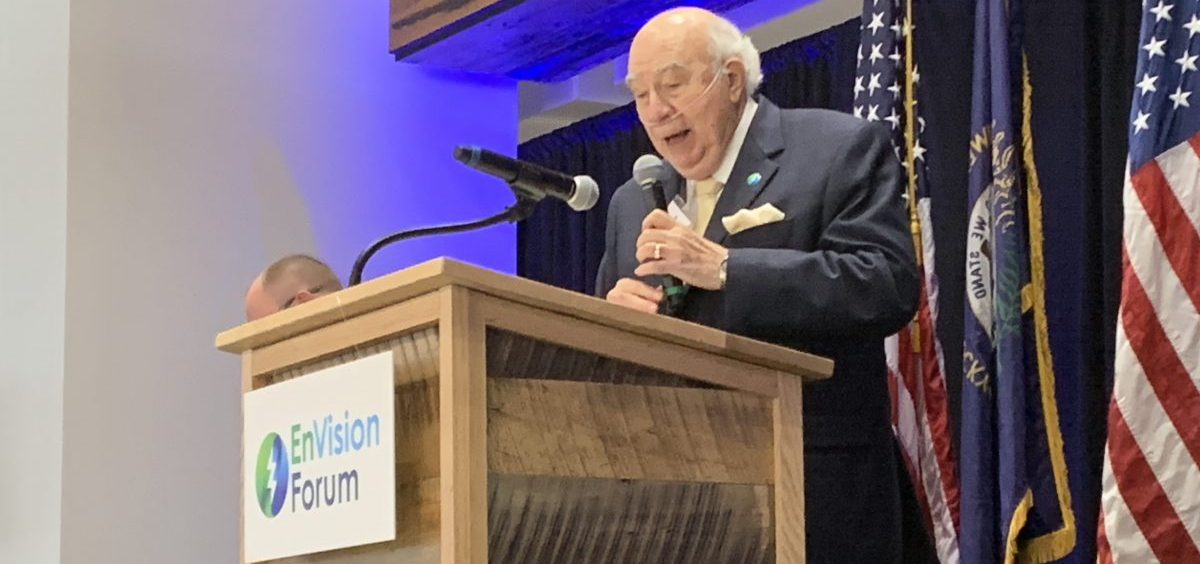News

Black Lung Trust Fund Likely Burdened by Murray Bankruptcy
By: Sydney Boles | Ohio Valley ReSource
Posted on:
The recent bankruptcy of Murray Energy is likely to significantly increase the debt of a struggling federal trust fund that supports disabled miners’ health care expenses.
According to court filings, Murray Energy could be responsible for as much as $155 million under the Black Lung Act and general workers’ compensation, but testimony from the Government Accountability Office shows that the company only offered $1.1 million in collateral to the Black Lung Disability Trust Fund. That means the struggling fund will likely have to take on at least some of that liability.
The federal fund was established in 1978 to provide monthly stipends and health care coverage for miners disabled by black lung, a preventable and progressive workplace disease. The fund, which is supported by a per-ton tax on coal companies, currently covers expenses for some 25,000 miners and their dependents, and is expected to be $15 billion in debt by 2050. Last year, Congress failed to extend a higher per-ton tax rate, increasing the strain on the fund.
A spokesperson for Senate Majority Leader Mitch McConnell of Kentucky said in an email to the ReSource, “While the temporary, higher tax expired last year, current benefits for our impacted miners and their families have been maintained. Senator McConnell will continue to ensure these important benefits are maintained. Additionally he will continue working on the many ways to help coal miners and the clinics that serve them across Kentucky.”
If the fund becomes insolvent, it may be bailed out by the Treasury’s general fund, effectively transferring the burden of caring for disabled miners from the industry that caused the illnesses to American taxpayers.
“History shows that miners and their families will be forced to pay the price in the form of reduced eligibility for benefits if Congress allows the Black Lung Disability Trust Fund to sink deeper into debt,” Rep. Bobby Scott, chairman of the House Ed and Labor committee, said in a hearing this summer. “Given the recent rise in the most severe form of black lung disease, Congress must take action to secure future benefits and health care for disabled miners.”
A spokesperson for Murray Energy did not respond to a request for comment for this article, but in court filings, newly appointed Chief Executive Officer of Holdings Robert Moore said, “Although Murray has been able to outlast many of its competitors, mounting debt and legacy liability expenses have become too heavy of a burden to sustain under current industry conditions.”
According to recent testimony from the Government Accountability Office, there were 22 self-insured active coal operators as of June 2019. Only 10 of those had provided estimates for their total unfunded liability to the trust fund — that is, the potential debt that could be transferred to the federal government if the company filed for bankruptcy.
“An estimated black lung liability of over $310 million has been transferred to the trust fund from insolvent coal operators,” said GAO Director of Education, Workforce and Income Security Cindy Brown Barnes. “In addition to those liabilities being transferred, there’s also the beneficiaries that have come along with that. There’s been over 1500 beneficiaries that have been transferred to the trust fund as a result of the companies that we looked at from 2014 to 2016.”
Brown Barnes could not confirm how much, if any, liability from Murray Energy would be transferred to the fund.
“Just because a company is bankrupt, it doesn’t necessarily mean that the liabilities are going to be transferred to the trust fund,” Brown Barnes cautioned. “There’s one liability at the time of bankruptcy and then another liability that gets transferred to the fund. It’s not a one-to-one.”
A report further detailing that unfunded liability, and its implications for the solvency of the trust fund, is expected early next year.
A Larger Pattern
As of October 29, Murray reported approximately $2.7 billion in funded debt and over $8 billion in actual or potential legacy liability obligations under pension and benefit plans, including the black lung trust fund. As Murray’s numerous secured creditors vie to recoup as much of their debts as they can, it is likely that there won’t be money left over to pay back environmental, retiree and health care debts.
“When you have this pattern of a large company spinning off its least productive assets and loading those assets with obligations that it obviously doesn’t want to pay, it seems to look like it’s a strategy,” said Josh Macey, an assistant visiting professor at Cornell University.
Macey is a co-author of a recent article in the Stanford Law Review titled, “Bankruptcy as Bailout: Coal Company Insolvency and the Erosion of Federal Law.” In that paper, Macey and his co-author found that since 2012, four of the nation’s largest coal producers used bankruptcy to discharge roughly $3.2 billion in retiree benefits and $1.9 billion in environmental debts, as well as $5.2 billion in other regulatory obligations. Those numbers were current as of April 2019, before the high-profile bankruptcies of Blackjewel, Blackhawk, and Murray Energy.
Macey said Murray took a slightly different tack than other companies in similar positions. Rather than spinning off unprofitable assets into new companies that were designed to fail, Macey said, “Murray went about snatching [assets] up at a pretty frenzied pace, because it was able to in that way pledge more assets as collateral and give its own creditors tons and tons of collateral that ensured they, too, would be paid before miners and the environment.”


